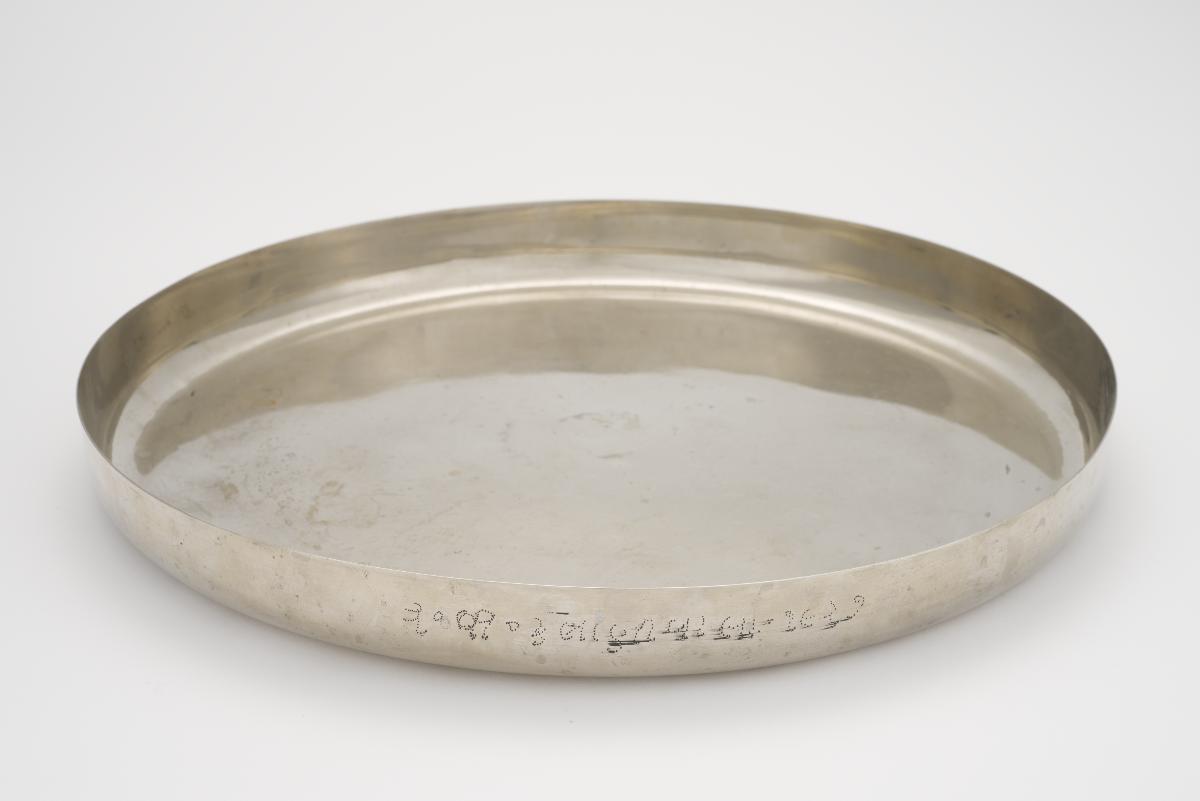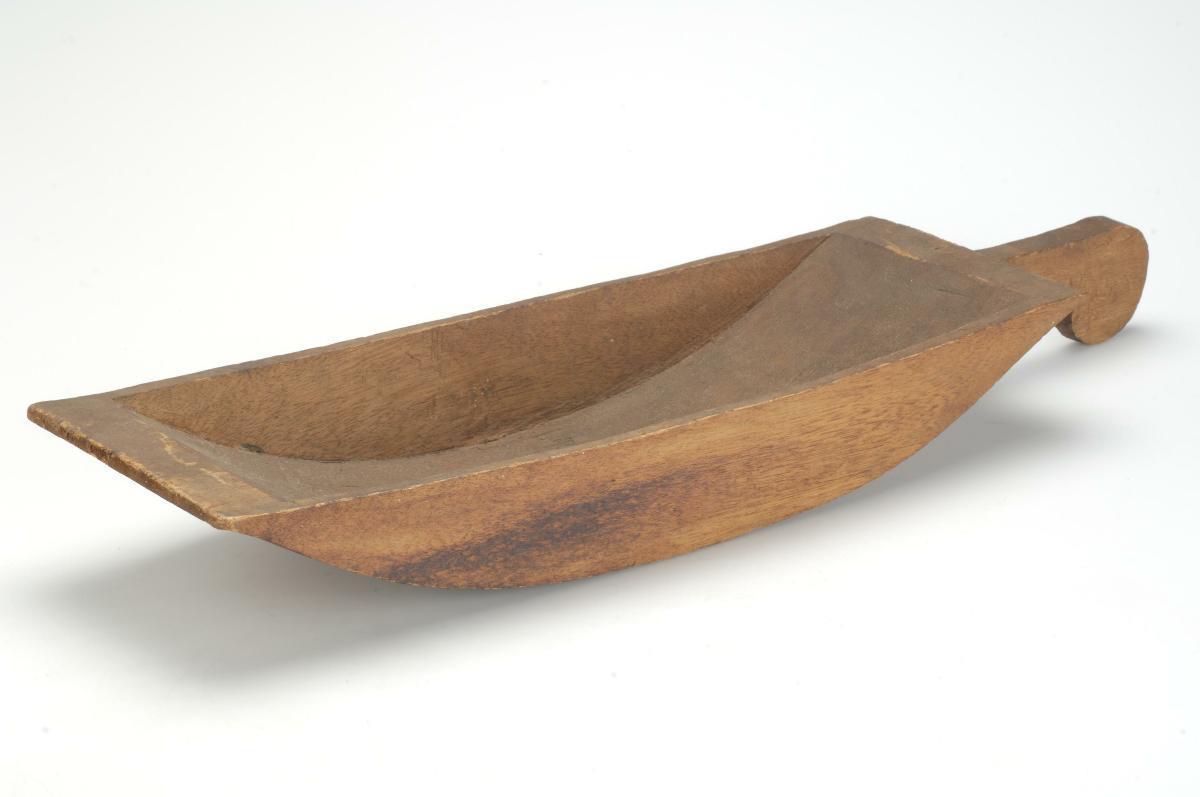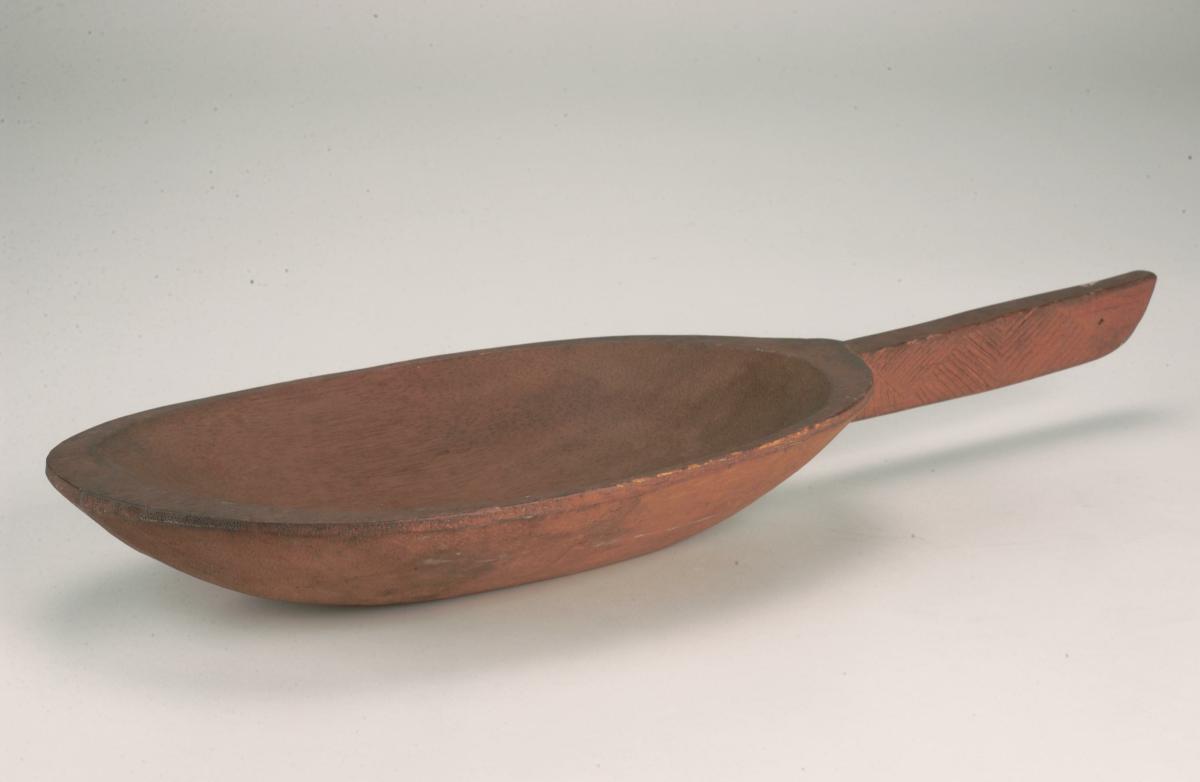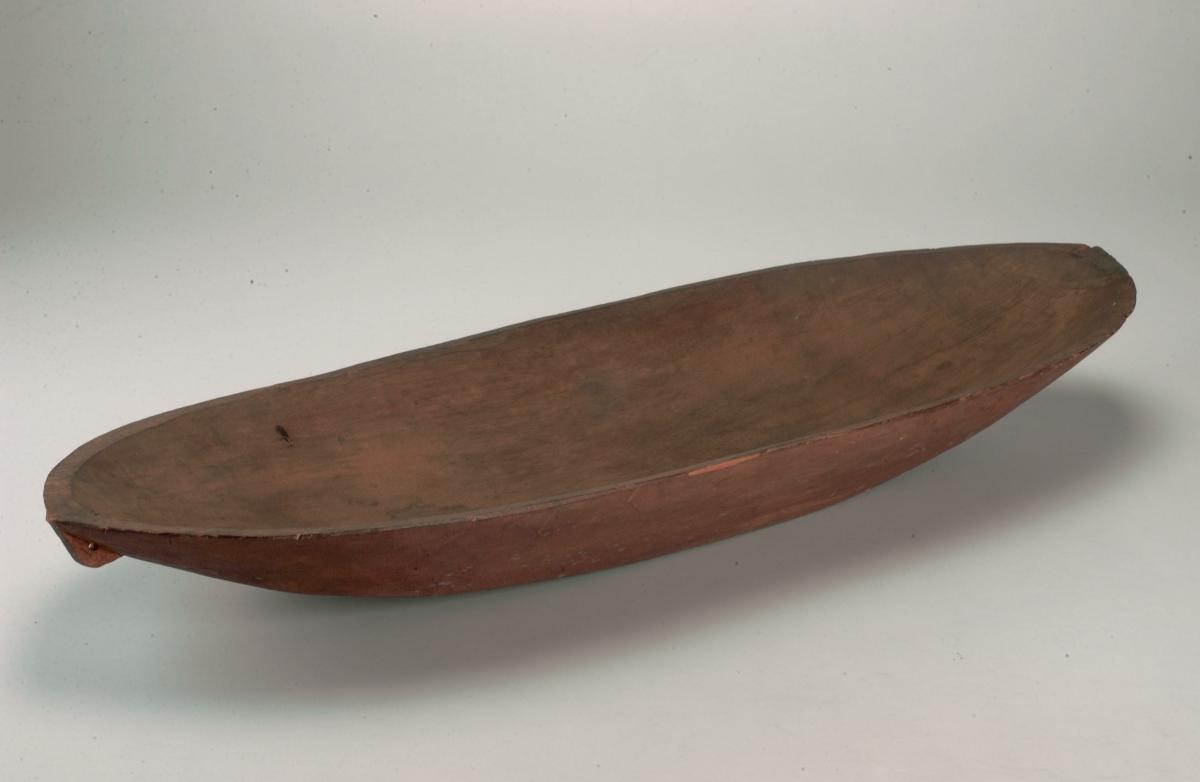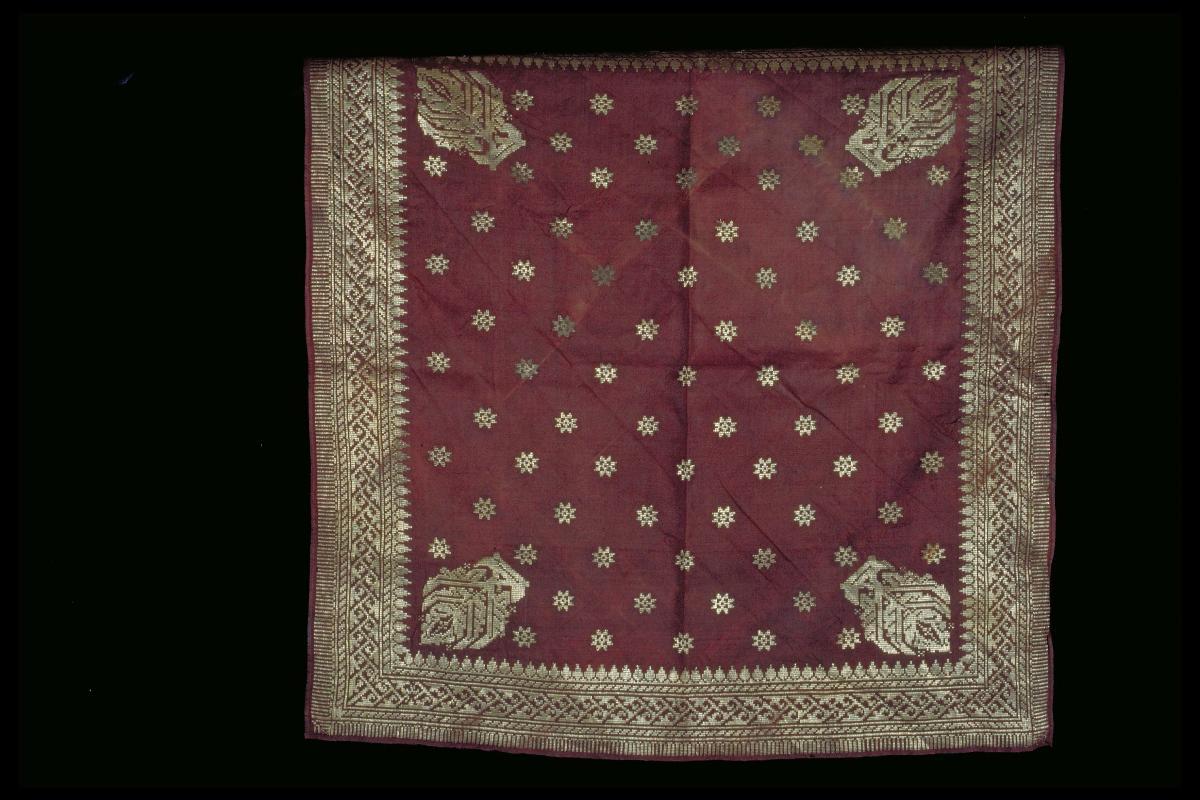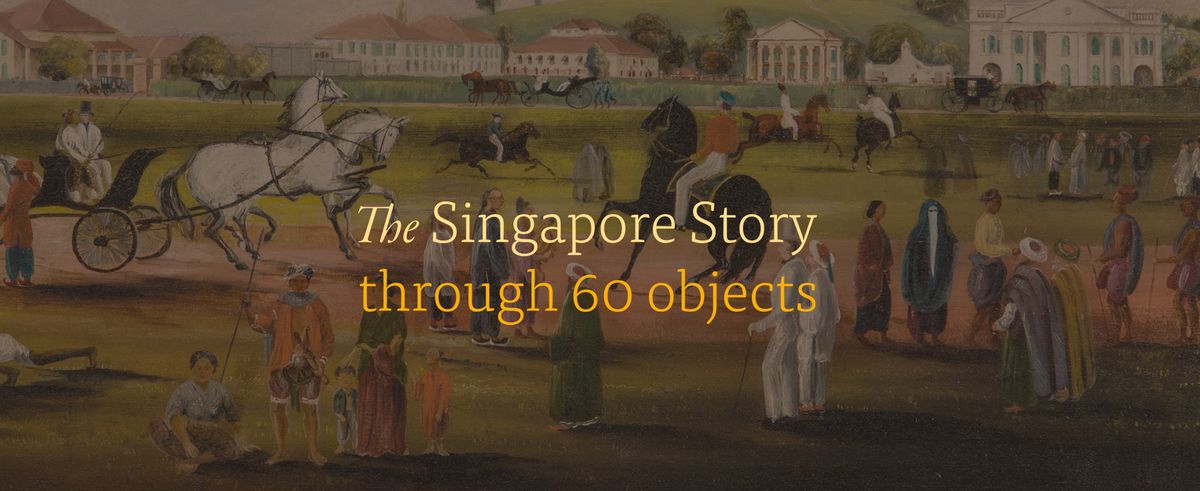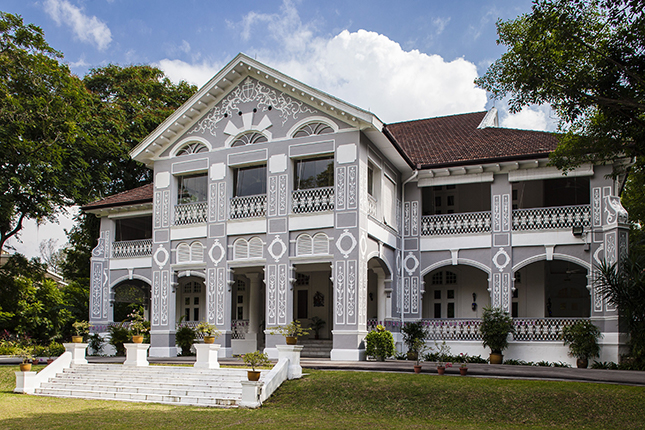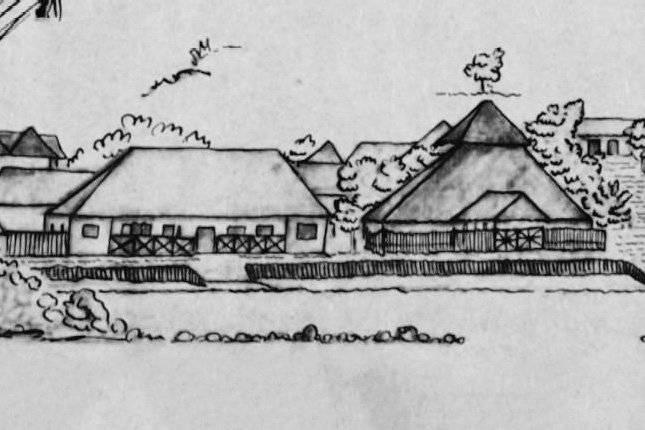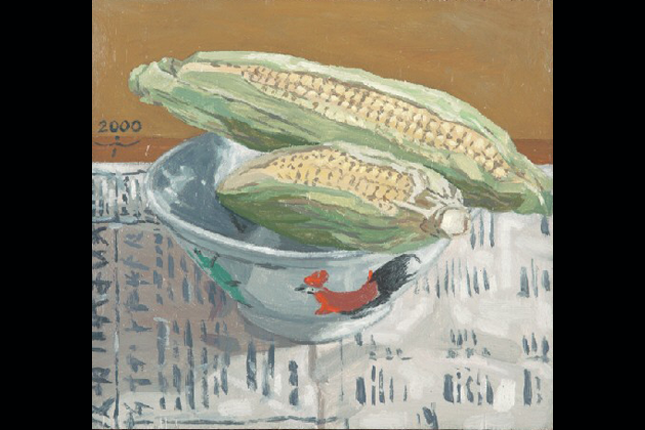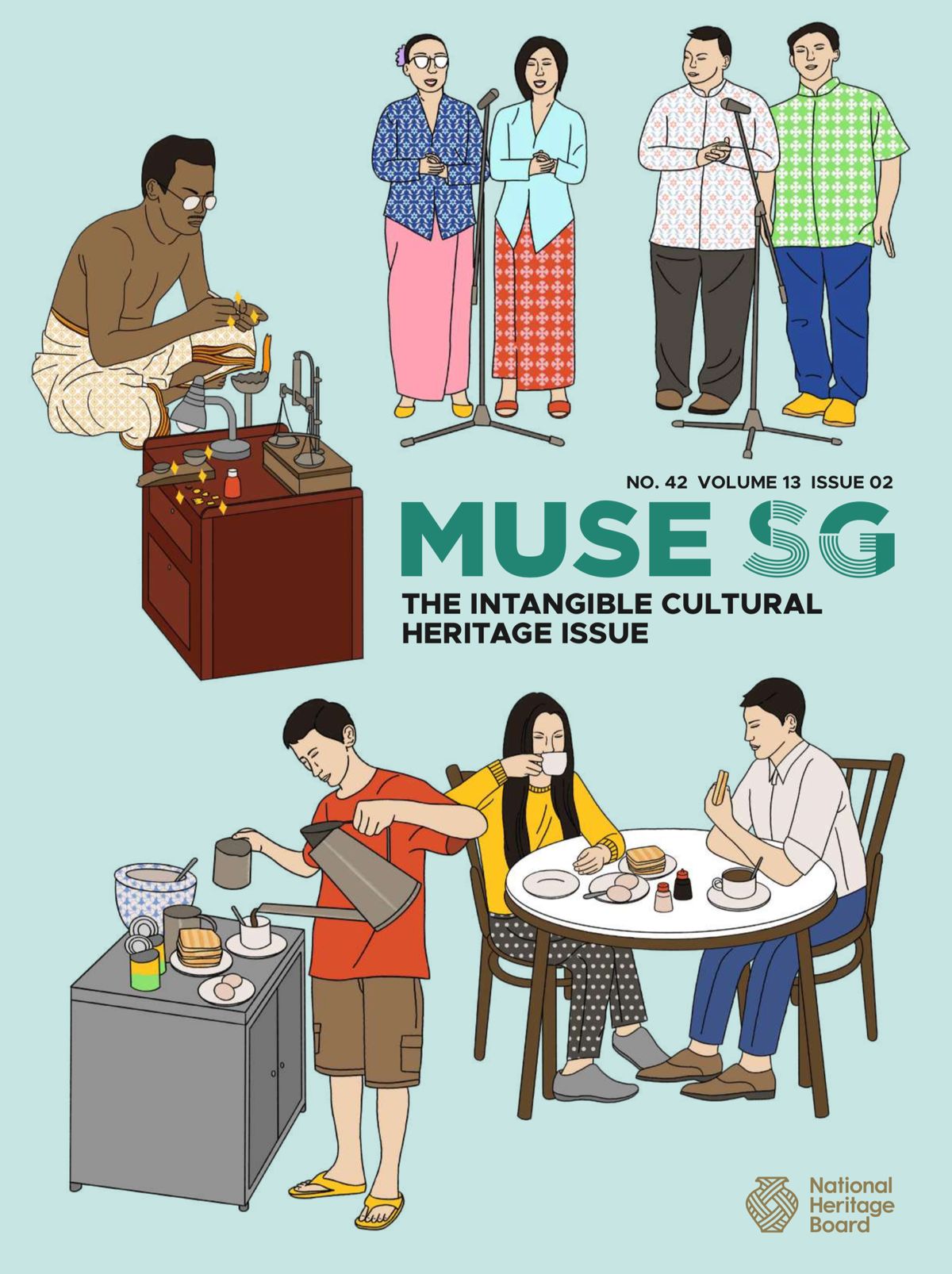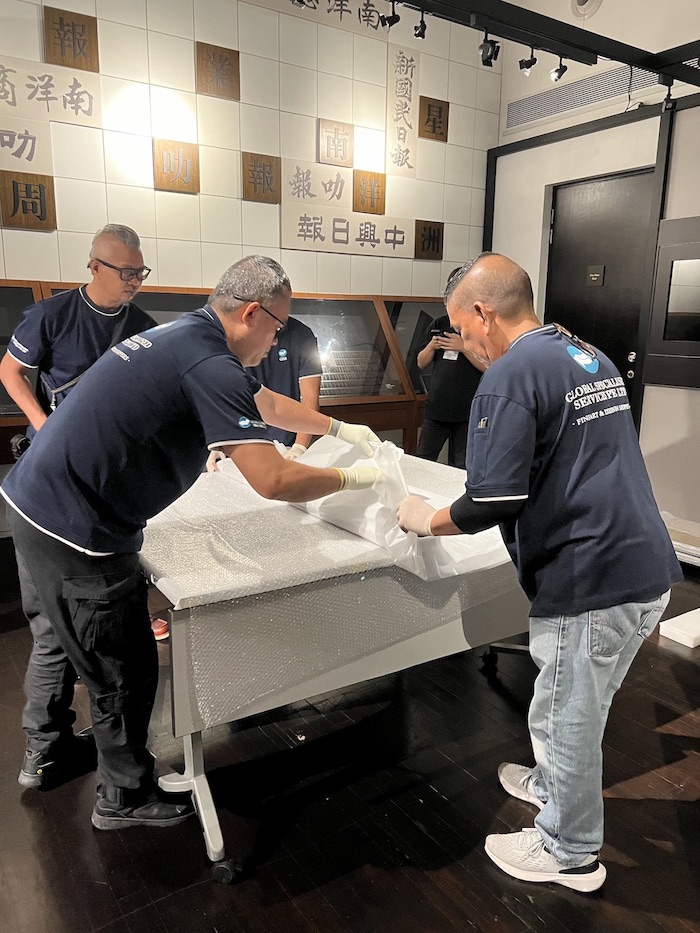Object size: 4.0 x 35.5 x 35.8 cm
This is part of a set of Parsi Zoroastrian ritual paraphernalia (alat) consisting of implements that are used for Zoroastrian fire rituals. Fire (atash), which is associated with truth and societal order, is a medium through which Zoroastrians offer prayers to Ahura Mazda. This khumcho or ses (ritual tray) is used to hold religious implements and offerings used for the ritual, and is said to be representative of the Amesha Spenta, which are divine entities emanating from Ahura Mazda. Formerly belonging to Parsi Zoroastrian priest, this set of ritual paraphernalia is likely to have been made for personal use, as noted from the small stature of the afarganyu.Despite being relatively small in numbers since their settling in India in the 10th century, members of the Parsi community have become influential figures in the areas of trade, commerce, and industry in India by the mid-19th century. In addition to being involved in a host of charitable works such as the building of fire temples, schools, and hospitals, the Parsi community, with their new-found wealth and trade networks, were also engaged in a wider range of consumerism that included the use of silverware. Gaining in popularity in India during the 19th century, silverware was produced for both the local and European market in several centres within India, such as Madras, Kutch, Kashmir, Calcutta, and Bombay. Silver workshops in European centres in Germany and Britain were also commissioned to produce silverware for export to India, of which the German-made afarganyu is a fine example. Locally produced at a fraction of the cost of imported silverware, nickel silverware, such as this ses, came to be more popular than pure silver ware.




